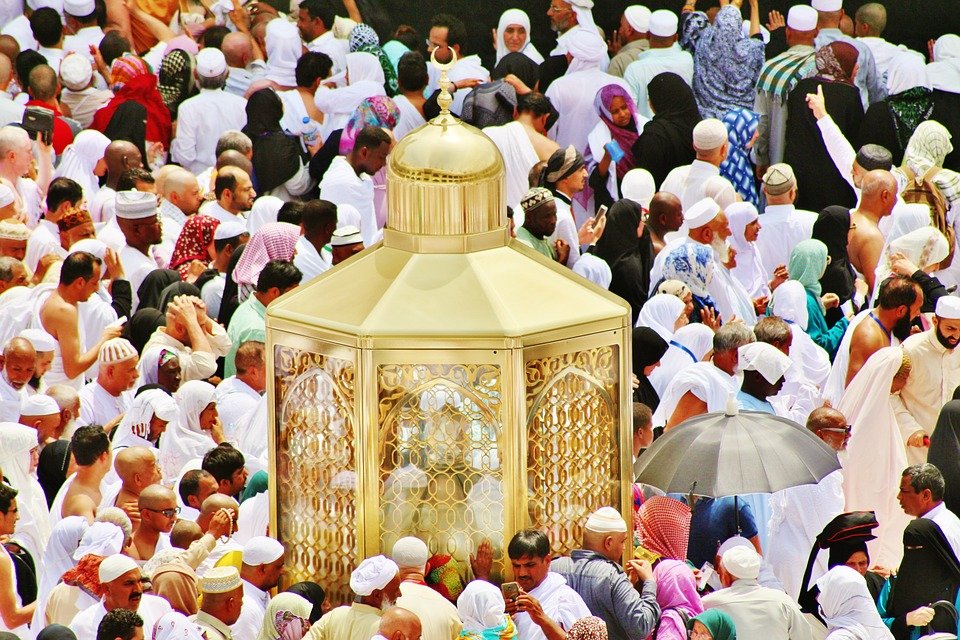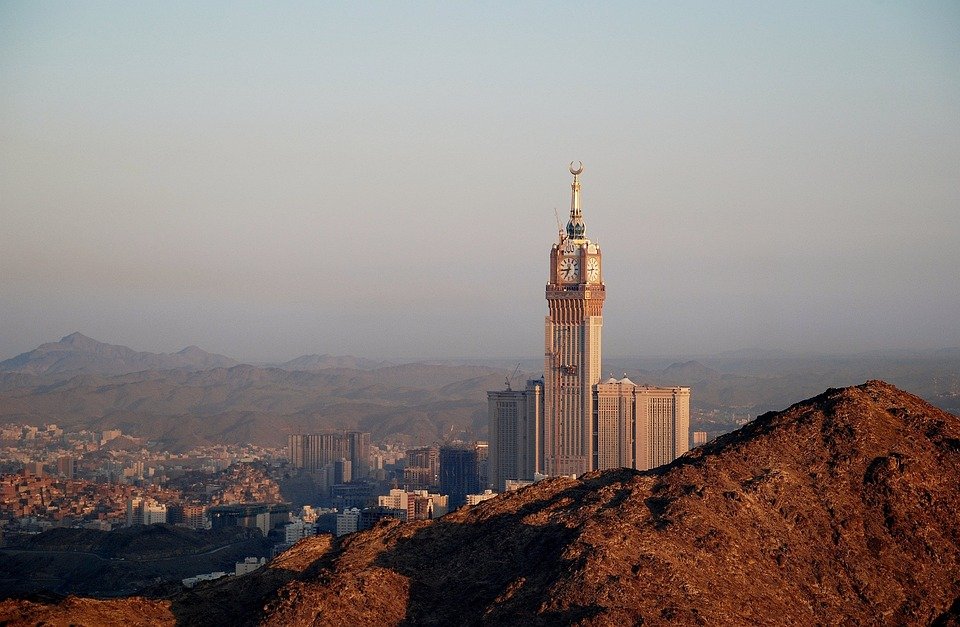You are here to read: What Is Hajj in the 5 Pillars of Islam: A Comprehensive Guide – A Thoughtfully Written Guide Offering Spiritual Wisdom and Travel Advice for Every Pilgrim who is going on holy journey of Hajj or Umrah.
What is Hajj in the 5 pillars of Islam? This question holds profound significance for Muslims around the world, as Hajj represents one of the essential acts of worship prescribed in the faith. In this article, I aim to provide you with a comprehensive guide on what Hajj entails and its crucial role in the Five Pillars of Islam. Hajj is a pilgrimage to the holy city of Mecca that every Muslim is required to undertake at least once in their lifetime, provided they have the means to do so. You will discover detailed insights into the rituals, practices, and spiritual significance of Hajj, ensuring that you gain a deeper understanding of its value.
The importance of what is Hajj in the 5 pillars of Islam cannot be overstated. It symbolizes unity, humility, and submission to God, reinforcing the bonds amongst Muslims globally. In my opinion, the experiences shared during Hajj have the power to transform lives and renew faith. Our site, Airlinkhajjandumrah.com, reflects our nine years of expertise in facilitating Umrah and travel to Makkah and Madinah since 2016. We bring you reliable and accurate information about Hajj, ensuring that you receive the proper guidance needed for this monumental act of worship. Join us as we unpack the significance of Hajj in Islamic practice.
What Is Hajj?
Hajj is a significant religious pilgrimage for Muslims, taking place annually in the holy city of Makkah. It’s one of the five pillars of Islam, which are essential acts of worship that guide the life of a Muslim. Hajj is not just a physical journey; it embodies spiritual growth and a deep connection with faith. Every Muslim who is able must perform Hajj at least once in their lifetime. Can you imagine being in a place filled with millions of people from all over the globe, all seeking the same spiritual connection? It’s truly remarkable.
During Hajj, pilgrims perform a series of rituals over several days. These rituals have been practiced for centuries and hold very deep meanings. From standing on the plains of Arafat to circling the Kaaba, every aspect of Hajj is rich with tradition and spirituality. We might think of Hajj as a time to reflect, pray, and unite with others, which can be a profoundly moving experience for everyone involved.
The Five Pillars of Islam
To understand Hajj, we need to look at the Five Pillars of Islam. These pillars serve as the foundation of a Muslim’s faith and practices. The first pillar is the Shahada, which is the declaration of faith. It confirms the belief in one God and the prophethood of Muhammad. Following this is Salah, or prayer, which is performed five times a day. The third pillar, Zakat, involves giving to charity, emphasizing the importance of helping those in need.
Finally, we have Sawm and Hajj. Sawm refers to fasting during the month of Ramadan, while Hajj is the pilgrimage to Makkah. Each pillar plays a crucial role in shaping a Muslim’s life, promoting community, obedience to God, and self-reflection. Together, they create a comprehensive framework for faith and actions, guiding Muslims toward a more fulfilling and purposeful life.
The Significance of Hajj
Hajj is not only a religious duty but also a time for spiritual renewal. Every action during the pilgrimage has a purpose, allowing pilgrims to reflect on their lives and seek forgiveness. For many, this symbolizes a fresh start, cleansing the soul from past mistakes. Isn’t it beautiful to believe that every person, regardless of their background, shares this quest for spirituality?
You're at the middle of this awesome post at AirlinkHajjandUmrah.com through: What Is Hajj in the 5 Pillars of Islam: A Comprehensive Guide. Keep reading, it gets better!
Additionally, Hajj reinforces the idea of unity among Muslims globally. Everyone wears simple white garments, erasing social barriers. Pilgrims come together to worship in a respectful manner. This sense of equality encourages compassion and understanding. In my opinion, this act of unity enhances the pilgrim’s experience, turning it into a collective celebration of faith and devotion.
The Key Rituals of Hajj
Several key rituals define the experience of Hajj. One such ritual is standing at Arafat, which occurs on the second day of Hajj. Pilgrims gather in prayer, seeking divine mercy and forgiveness. It’s a powerful moment, filled with heartfelt supplications. People spend the day praying and reflecting, feeling a profound sense of closeness to God.
Another essential ritual is Tawaf, where pilgrims walk around the Kaaba seven times in a counter-clockwise direction. This circular motion represents devotion and the unity of believers in the worship of the One God. Each step taken around the Kaaba echoes the heartbeat of millions of others, joining together in their faith. It’s lovely to think of how each ritual builds a deep connection between the individual and their faith.
The Journey of Spiritual Growth
Hajj is also about personal transformation. The pilgrimage encourages self-reflection and mindfulness. Pilgrims often report feeling enlightened and inspired during their time in Makkah. The combination of prayer, rituals, and the shared experience fosters a deep sense of belonging and purpose. This journey can lead to long-lasting changes in a person’s life.
Besides the physical demands of Hajj, the spiritual experience often leaves an enduring impact. Many return home with new perspectives, eager to apply what they’ve learned. They strive to carry the lessons of compassion and humility into their daily lives. I think that’s one of the most beautiful aspects of Hajj—it doesn’t end when the pilgrimage does; it continues to shape lives well after returning home.
The Community Aspect of Hajj
Hajj is a remarkable opportunity to engage with people from all walks of life. Pilgrims come together in a multitude of languages and cultures, united in the same purpose. This large gathering fosters friendships and connections, often leading to lasting bonds. Isn’t it inspiring to think people can find common ground despite differences?
The communal aspect of Hajj also extends beyond personal connections. People collectively participate in rituals, enhancing the experience. They support each other emotionally, making even the most challenging moments easier to bear. Witnessing the kindness and generosity among fellow pilgrims can be a heartwarming experience, one that emphasizes the importance of compassion in one’s faith.
In Conclusion: Embracing Hajj
Hajj stands as a monumental practice within Islam, encapsulating the essence of devotion and unity. It provides a unique opportunity for spiritual growth and reflection, reminding us of the importance of faith in our lives. Through the various rituals and the bonds formed with fellow pilgrims, one can truly witness the beauty of shared spirituality.
Having the chance to participate in Hajj is more than just fulfilling a religious duty; it represents an embrace of faith and a commitment to becoming a better individual. I believe that embracing Hajj can lead to deeper understanding and connection, enriching our lives and those around us. For many, it becomes a cherished memory, a pilgrimage that shapes their identity for years to come.
That wraps up What Is Hajj in the 5 Pillars of Islam: A Comprehensive Guide. Thanks for sticking with us till here! Share this: What Is Hajj in the 5 Pillars of Islam: A Comprehensive Guide with your friends.
Check our homepage at Air Link Hajj & Umrah for more awesome updates.
Some interesting posts are: 1: Umrah Mubarak, 2: When is Umrah closed 2026?, 3: When does Umrah start after Hajj 2026?
Mushu, an experienced Saudi Arabia traveler and writer, shares insightful tips and spiritual reflections to enhance Hajj and Umrah journeys for fellow pilgrims. He has been to Makkah and Madina from 2016 to 2023 many times and his posts will reflect this.







